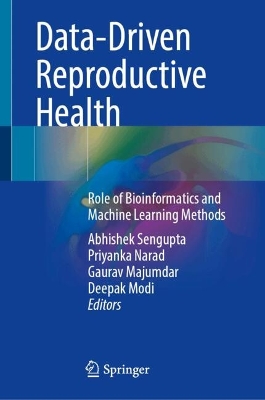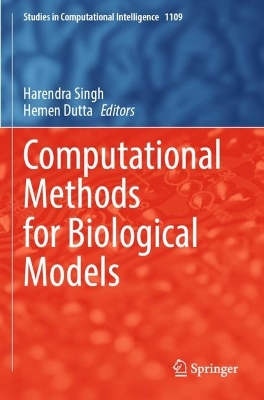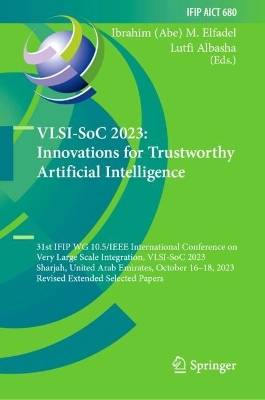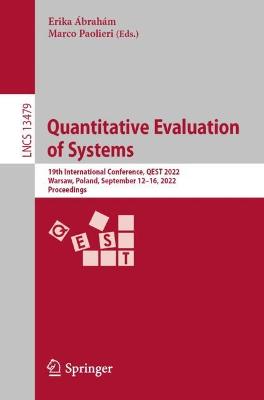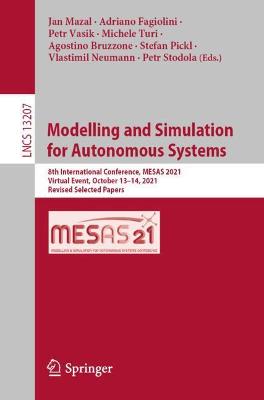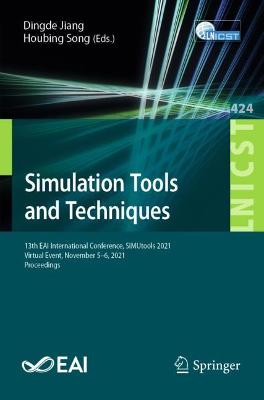Bioinformatics Research and Applications
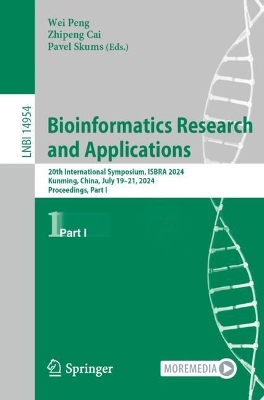 portes grátis
portes grátis
Bioinformatics Research and Applications
20th International Symposium, ISBRA 2024, Kunming, China, July 19-21, 2024, Proceedings, Part I
Skums, Pavel; Cai, Zhipeng; Peng, Wei
Springer Verlag, Singapore
07/2024
511
Mole
9789819751273
15 a 20 dias
Descrição não disponível.
.- Predicting Drug-Target Affinity Using Protein Pocket and Graph Convolution Network.
.- MSMK: Multiscale module kernel for identifying disease-related genes.
.- Flat and Nested Protein Name Recognition Based on BioBERT and Biaffine Decoder.
.- RFIR: A Lightweight Network for Retinal Fundus Image Restoration.
.- Gaussian Beltrami-Klein Model for Protein Sequence Classification: A Hyperbolic Approach.
.- stEnTrans: Transformer-based deep learning for spatial transcriptomics enhancement.
.- Contrastive Masked Graph Autoencoders for Spatial Transcriptomics Data Analysis.
.- Spatial gene expression prediction from histology images with STco.
.- Exploration and Visualization Methods for Chromatin Interaction Data.
.- A Geometric Algorithm for Blood Vessel Reconstruction from Skeletal Representation.
.- UFGOT: unbalanced filter graph alignment with optimal transport for cancer subtyping based on multi-omics data.
.- Dendritic SE-ResNet Learning for Bioinformatic Classification.
.- GSDRP: Fusing Drug Sequence Features with Graph Features to Predict Drug Response.
.- CircMAN: Multi-channel Attention Networks Based on Feature Fusion for CircRNA-binding Site Prediction.
.- Machine Learning-Driven Discovery of Quadruple-Negative Breast Cancer Subtypes from Gene Expression Data.
.- A novel Combined Embedding Model based on Heterogeneous Network for Inferring Microbe-Metabolite Interactions.
.- Central Feature Network Enables Accurate Detection of Both Small and Large Particles in Cryo-Electron Tomography.
.- LncRNA-disease association prediction based on integrated application of matrix decomposition and graph contrastive learning.
.- Predictive Score-Guided Mixup for Medical Text Classification.
.- CHASOS: A novel deep learning approach for chromatin loop predictions.
.- A deep metric learning based method for predicting miRNA-disease associations.
.- Learning an adaptive self-expressive fusion model for multi-omics cancer subtype prediction.
.- IFNet: An Image-Enhanced Cross-Modal Fusion Network for Radiology Report Generation.
.- Hybrid Attention Knowledge Fusion Network for Automated Medical Code Assignment.
.- Variable-length Promoter Strength Prediction based on Graph Convolution.
.- scMOGAE: A Graph Convolutional Autoencoder-Based Multi-omics Data Integration Framework for Single-Cell Clustering.
.- VM-UNET-V2: Rethinking Vision Mamba UNet for Medical Image Segmentation.
.- Fighting Fire with Fire: Medical AI Models Defend Against Backdoor Attacks via Self-Learning.
.- An In-depth Assessment of Sequence Clustering softares in Bioinformatics.
.- Novel Fine-tuning Strategy on Pre-trained Protein Model Enhances ACP functional Type Classfication.
.- Enhancing Privacy and Preserving Accuracy in Medical Image Classification with Limited Labeled Samples.
.- gaBERT: an Interpretable Pretrained Deep Learning Framework for Cancer Gene Marker Discovery.
.- Hybrid CNN and Low-Complexity Transformer Network with Attention-based Feature Fusion for Predicting Lung Cancer Tumor after Neoadjuvant Chemoimmunotherapy.
.- Deep Hyper-Laplacian Regularized Self-Representation Learning based Structured Association Analysis for Brain Imaging Genetics.
.- IntroGRN: Gene Regulatory Network Inference from single-cell RNA Data Based on Introspective VAE.
.- Identification of Potential SARS-CoV-2 Main Protease Inhibitors Using Drug Repurposing and Molecular Modeling.
.- An Ensemble Learning Model for Predicting Unseen TCR-Epitope Interactions.
.- Deep Learning Approach to Identify Protein's Secondary Structure Elements.
.- Modeling single-cell ATAC- seq data based on contrastive learning.
.- Continuous Identification of Sepsis-Associated Acute Heart Failure Patients: An Integrated LSTM-Based Algorithm.
.- A novel approach for subtype identification via multi-omics data using adversarial autoencoder.
.- MSMK: Multiscale module kernel for identifying disease-related genes.
.- Flat and Nested Protein Name Recognition Based on BioBERT and Biaffine Decoder.
.- RFIR: A Lightweight Network for Retinal Fundus Image Restoration.
.- Gaussian Beltrami-Klein Model for Protein Sequence Classification: A Hyperbolic Approach.
.- stEnTrans: Transformer-based deep learning for spatial transcriptomics enhancement.
.- Contrastive Masked Graph Autoencoders for Spatial Transcriptomics Data Analysis.
.- Spatial gene expression prediction from histology images with STco.
.- Exploration and Visualization Methods for Chromatin Interaction Data.
.- A Geometric Algorithm for Blood Vessel Reconstruction from Skeletal Representation.
.- UFGOT: unbalanced filter graph alignment with optimal transport for cancer subtyping based on multi-omics data.
.- Dendritic SE-ResNet Learning for Bioinformatic Classification.
.- GSDRP: Fusing Drug Sequence Features with Graph Features to Predict Drug Response.
.- CircMAN: Multi-channel Attention Networks Based on Feature Fusion for CircRNA-binding Site Prediction.
.- Machine Learning-Driven Discovery of Quadruple-Negative Breast Cancer Subtypes from Gene Expression Data.
.- A novel Combined Embedding Model based on Heterogeneous Network for Inferring Microbe-Metabolite Interactions.
.- Central Feature Network Enables Accurate Detection of Both Small and Large Particles in Cryo-Electron Tomography.
.- LncRNA-disease association prediction based on integrated application of matrix decomposition and graph contrastive learning.
.- Predictive Score-Guided Mixup for Medical Text Classification.
.- CHASOS: A novel deep learning approach for chromatin loop predictions.
.- A deep metric learning based method for predicting miRNA-disease associations.
.- Learning an adaptive self-expressive fusion model for multi-omics cancer subtype prediction.
.- IFNet: An Image-Enhanced Cross-Modal Fusion Network for Radiology Report Generation.
.- Hybrid Attention Knowledge Fusion Network for Automated Medical Code Assignment.
.- Variable-length Promoter Strength Prediction based on Graph Convolution.
.- scMOGAE: A Graph Convolutional Autoencoder-Based Multi-omics Data Integration Framework for Single-Cell Clustering.
.- VM-UNET-V2: Rethinking Vision Mamba UNet for Medical Image Segmentation.
.- Fighting Fire with Fire: Medical AI Models Defend Against Backdoor Attacks via Self-Learning.
.- An In-depth Assessment of Sequence Clustering softares in Bioinformatics.
.- Novel Fine-tuning Strategy on Pre-trained Protein Model Enhances ACP functional Type Classfication.
.- Enhancing Privacy and Preserving Accuracy in Medical Image Classification with Limited Labeled Samples.
.- gaBERT: an Interpretable Pretrained Deep Learning Framework for Cancer Gene Marker Discovery.
.- Hybrid CNN and Low-Complexity Transformer Network with Attention-based Feature Fusion for Predicting Lung Cancer Tumor after Neoadjuvant Chemoimmunotherapy.
.- Deep Hyper-Laplacian Regularized Self-Representation Learning based Structured Association Analysis for Brain Imaging Genetics.
.- IntroGRN: Gene Regulatory Network Inference from single-cell RNA Data Based on Introspective VAE.
.- Identification of Potential SARS-CoV-2 Main Protease Inhibitors Using Drug Repurposing and Molecular Modeling.
.- An Ensemble Learning Model for Predicting Unseen TCR-Epitope Interactions.
.- Deep Learning Approach to Identify Protein's Secondary Structure Elements.
.- Modeling single-cell ATAC- seq data based on contrastive learning.
.- Continuous Identification of Sepsis-Associated Acute Heart Failure Patients: An Integrated LSTM-Based Algorithm.
.- A novel approach for subtype identification via multi-omics data using adversarial autoencoder.
Este título pertence ao(s) assunto(s) indicados(s). Para ver outros títulos clique no assunto desejado.
Computer Science;Informatics;Conference Proceedings;Research;Applications;Applied computing;Life and medical sciences;Computing;methodologies;Artificial intelligence
.- Predicting Drug-Target Affinity Using Protein Pocket and Graph Convolution Network.
.- MSMK: Multiscale module kernel for identifying disease-related genes.
.- Flat and Nested Protein Name Recognition Based on BioBERT and Biaffine Decoder.
.- RFIR: A Lightweight Network for Retinal Fundus Image Restoration.
.- Gaussian Beltrami-Klein Model for Protein Sequence Classification: A Hyperbolic Approach.
.- stEnTrans: Transformer-based deep learning for spatial transcriptomics enhancement.
.- Contrastive Masked Graph Autoencoders for Spatial Transcriptomics Data Analysis.
.- Spatial gene expression prediction from histology images with STco.
.- Exploration and Visualization Methods for Chromatin Interaction Data.
.- A Geometric Algorithm for Blood Vessel Reconstruction from Skeletal Representation.
.- UFGOT: unbalanced filter graph alignment with optimal transport for cancer subtyping based on multi-omics data.
.- Dendritic SE-ResNet Learning for Bioinformatic Classification.
.- GSDRP: Fusing Drug Sequence Features with Graph Features to Predict Drug Response.
.- CircMAN: Multi-channel Attention Networks Based on Feature Fusion for CircRNA-binding Site Prediction.
.- Machine Learning-Driven Discovery of Quadruple-Negative Breast Cancer Subtypes from Gene Expression Data.
.- A novel Combined Embedding Model based on Heterogeneous Network for Inferring Microbe-Metabolite Interactions.
.- Central Feature Network Enables Accurate Detection of Both Small and Large Particles in Cryo-Electron Tomography.
.- LncRNA-disease association prediction based on integrated application of matrix decomposition and graph contrastive learning.
.- Predictive Score-Guided Mixup for Medical Text Classification.
.- CHASOS: A novel deep learning approach for chromatin loop predictions.
.- A deep metric learning based method for predicting miRNA-disease associations.
.- Learning an adaptive self-expressive fusion model for multi-omics cancer subtype prediction.
.- IFNet: An Image-Enhanced Cross-Modal Fusion Network for Radiology Report Generation.
.- Hybrid Attention Knowledge Fusion Network for Automated Medical Code Assignment.
.- Variable-length Promoter Strength Prediction based on Graph Convolution.
.- scMOGAE: A Graph Convolutional Autoencoder-Based Multi-omics Data Integration Framework for Single-Cell Clustering.
.- VM-UNET-V2: Rethinking Vision Mamba UNet for Medical Image Segmentation.
.- Fighting Fire with Fire: Medical AI Models Defend Against Backdoor Attacks via Self-Learning.
.- An In-depth Assessment of Sequence Clustering softares in Bioinformatics.
.- Novel Fine-tuning Strategy on Pre-trained Protein Model Enhances ACP functional Type Classfication.
.- Enhancing Privacy and Preserving Accuracy in Medical Image Classification with Limited Labeled Samples.
.- gaBERT: an Interpretable Pretrained Deep Learning Framework for Cancer Gene Marker Discovery.
.- Hybrid CNN and Low-Complexity Transformer Network with Attention-based Feature Fusion for Predicting Lung Cancer Tumor after Neoadjuvant Chemoimmunotherapy.
.- Deep Hyper-Laplacian Regularized Self-Representation Learning based Structured Association Analysis for Brain Imaging Genetics.
.- IntroGRN: Gene Regulatory Network Inference from single-cell RNA Data Based on Introspective VAE.
.- Identification of Potential SARS-CoV-2 Main Protease Inhibitors Using Drug Repurposing and Molecular Modeling.
.- An Ensemble Learning Model for Predicting Unseen TCR-Epitope Interactions.
.- Deep Learning Approach to Identify Protein's Secondary Structure Elements.
.- Modeling single-cell ATAC- seq data based on contrastive learning.
.- Continuous Identification of Sepsis-Associated Acute Heart Failure Patients: An Integrated LSTM-Based Algorithm.
.- A novel approach for subtype identification via multi-omics data using adversarial autoencoder.
.- MSMK: Multiscale module kernel for identifying disease-related genes.
.- Flat and Nested Protein Name Recognition Based on BioBERT and Biaffine Decoder.
.- RFIR: A Lightweight Network for Retinal Fundus Image Restoration.
.- Gaussian Beltrami-Klein Model for Protein Sequence Classification: A Hyperbolic Approach.
.- stEnTrans: Transformer-based deep learning for spatial transcriptomics enhancement.
.- Contrastive Masked Graph Autoencoders for Spatial Transcriptomics Data Analysis.
.- Spatial gene expression prediction from histology images with STco.
.- Exploration and Visualization Methods for Chromatin Interaction Data.
.- A Geometric Algorithm for Blood Vessel Reconstruction from Skeletal Representation.
.- UFGOT: unbalanced filter graph alignment with optimal transport for cancer subtyping based on multi-omics data.
.- Dendritic SE-ResNet Learning for Bioinformatic Classification.
.- GSDRP: Fusing Drug Sequence Features with Graph Features to Predict Drug Response.
.- CircMAN: Multi-channel Attention Networks Based on Feature Fusion for CircRNA-binding Site Prediction.
.- Machine Learning-Driven Discovery of Quadruple-Negative Breast Cancer Subtypes from Gene Expression Data.
.- A novel Combined Embedding Model based on Heterogeneous Network for Inferring Microbe-Metabolite Interactions.
.- Central Feature Network Enables Accurate Detection of Both Small and Large Particles in Cryo-Electron Tomography.
.- LncRNA-disease association prediction based on integrated application of matrix decomposition and graph contrastive learning.
.- Predictive Score-Guided Mixup for Medical Text Classification.
.- CHASOS: A novel deep learning approach for chromatin loop predictions.
.- A deep metric learning based method for predicting miRNA-disease associations.
.- Learning an adaptive self-expressive fusion model for multi-omics cancer subtype prediction.
.- IFNet: An Image-Enhanced Cross-Modal Fusion Network for Radiology Report Generation.
.- Hybrid Attention Knowledge Fusion Network for Automated Medical Code Assignment.
.- Variable-length Promoter Strength Prediction based on Graph Convolution.
.- scMOGAE: A Graph Convolutional Autoencoder-Based Multi-omics Data Integration Framework for Single-Cell Clustering.
.- VM-UNET-V2: Rethinking Vision Mamba UNet for Medical Image Segmentation.
.- Fighting Fire with Fire: Medical AI Models Defend Against Backdoor Attacks via Self-Learning.
.- An In-depth Assessment of Sequence Clustering softares in Bioinformatics.
.- Novel Fine-tuning Strategy on Pre-trained Protein Model Enhances ACP functional Type Classfication.
.- Enhancing Privacy and Preserving Accuracy in Medical Image Classification with Limited Labeled Samples.
.- gaBERT: an Interpretable Pretrained Deep Learning Framework for Cancer Gene Marker Discovery.
.- Hybrid CNN and Low-Complexity Transformer Network with Attention-based Feature Fusion for Predicting Lung Cancer Tumor after Neoadjuvant Chemoimmunotherapy.
.- Deep Hyper-Laplacian Regularized Self-Representation Learning based Structured Association Analysis for Brain Imaging Genetics.
.- IntroGRN: Gene Regulatory Network Inference from single-cell RNA Data Based on Introspective VAE.
.- Identification of Potential SARS-CoV-2 Main Protease Inhibitors Using Drug Repurposing and Molecular Modeling.
.- An Ensemble Learning Model for Predicting Unseen TCR-Epitope Interactions.
.- Deep Learning Approach to Identify Protein's Secondary Structure Elements.
.- Modeling single-cell ATAC- seq data based on contrastive learning.
.- Continuous Identification of Sepsis-Associated Acute Heart Failure Patients: An Integrated LSTM-Based Algorithm.
.- A novel approach for subtype identification via multi-omics data using adversarial autoencoder.
Este título pertence ao(s) assunto(s) indicados(s). Para ver outros títulos clique no assunto desejado.

